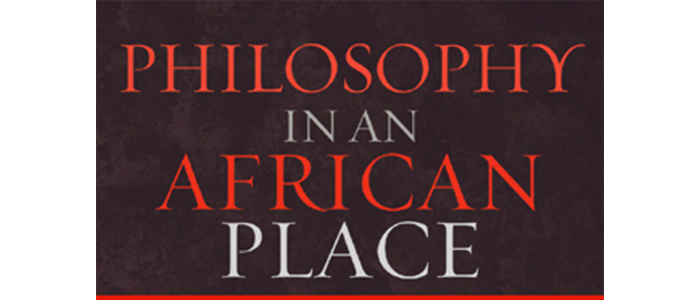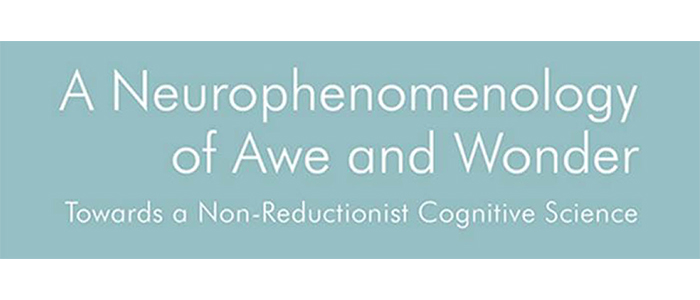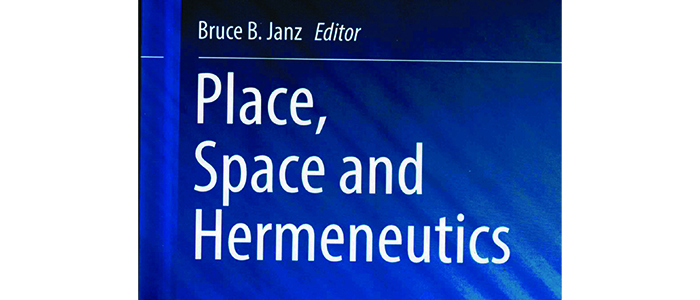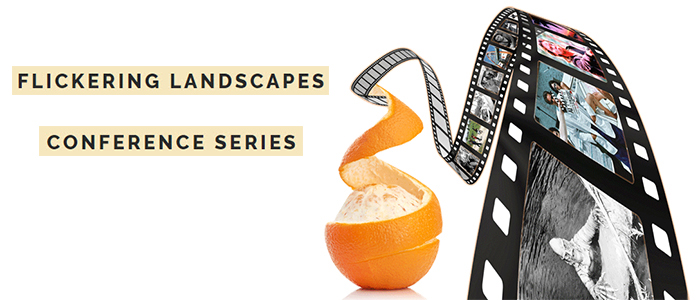Websites
- Australia Place Research Network
- *Center for Spatially Integrated Social Science: Spatial Resources for the Social Sciences.
- Central Place Theory Links
- Research Programme in Human Settlement
- Socio-Economics of Space (Gernot Grabher)
- Urban Field Research
- Walter Cristaller and Central Place Theory – excellent resource for the theory, with links and bibliography.
On-line Bibliographies & Searches
- Environment and Planning A, B, C, D Search Page
- Hyper Bourdieu World Catalogue
- Spatial Resources Literature Search (CSISS) – go here to search for Central Place Theory references.
Courses and Programs
- Space, Place, and Community (Judith Friedman)
- Spatial Analysis and Spatial Models (Stuart Sweeney) – includes lecture outlines
- The Spatial Configuration of Social Relations (Lori Hanson)
- Themes in Social Thought: Time and Space (Robert Rotenberg)
General Bibliography
Abbott-Chapman, Joan, Robertson, Margaret. “Youth, Leisure and Home: Space, Place and Identity.” Society and Leisure 24:2 (Fall 2001): 485-506.
Agnew, John. “The Devaluation of Place in Social Science” in Agnew, John A. & James Duncan, eds. The Power of Place: Bringing Together Geographical and Sociological Imaginations. Boston: Unwin Hyman, 1989: 9-29.
Agnew, John A. & James Duncan, eds. The Power of Place: Bringing Together Geographical and Sociological Imaginations. Boston: Unwin Hyman, 1989.
Agnew,John. “Representing Space: space, scale and culture in social science.” In Duncan,James; Ley,David, eds. Place/Culture/Representation. Routledge, London and New York, 1993: 251-271.
Allen, John & Michael Pryke. “The Production of Service Space.” Environment and Planning D-Society & Space 12 (1994): 453-475.
Amin, Ash and Patrick Cohendet. “Geographies of Knowledge Formation in Firms” http://www.druid.dk/conferences/summer2003/Papers/AMIN_COHENDET.pdf
Bærenholdt, Jørgen Ole and Kirsten Simonsen, eds. Space Odysseys: Spatiality and Social Relations in the 21st Century. Ashgate Publishers, 2004.
Baldry, C. “Space – The Final Frontier” Sociology 33 (1999): 535-553.
Bantjes, R. “Benthamism in the Countryside: The Architecture of Rural Space.” Journal of the History of Sociology 10 (1997): 249-269.
Barnes, T. J. “Place, space, and theories of economic value: Contextualism and essentialism in economic-geography.” Transactions of the Institute of British Geographers 14 (1989): 299-316.
Barnes, Trevor J. Logics of Dislocation: Models, Metaphors and Meanings of Economic Space (Mappings). NY: Guilford, 1996.
Bates, Benjamin R. “The New York Yankees and the Conservative Use of Space.” Ethnologies 24:1 (2002)
Bauder, Harald. “Culture in the Labor Market: Segmentation Theory and Perspectives of Place.” Progress in Human Geography 25:1 (March 2001): 37-52.
Baviskar, Amita. “Strong Sense of Self and Place.” http://www.hinduonnet.com/folio/fo0007/00070220.htm
Beggs, John J., Wayne J. Villemez, and Ruth Arnold. “Black Population Concentration and Black-White Inequality: Expanding the Consideration of Place and Space Effects.” Social Forces 76:1 (1997): 65-91.
Bélanger, Anouk. “Time, Space and the Study of Urban Collective Memory: A Framework to Analyze Power Relations at Play in the Production of Memory.” Canadian Journal of Urban Research 11:1 (June 2002).
Bhaskar, Roy. “Beef, Structure and Place: Notes from a Critical Naturalist Perspective.” Journal for the Theory of Social Behaviour 13:1 (1983): 81-95.
Blokland, Talja and Mike Savage. “Networks, Class and Place.” International Journal of Urban and Regional Research 25:2 (June 2001): 221-226.
Blomley, N. K. Law, Space, and the Geographies of Power. New York: Guilford Press, 1994.
Boden, D and H. L. Molotch. “The Compulsion of Proximity.” Friedland, Roger and Deirdre Boden, eds. NowHere: space, time and modernity. Berkeley: University of California, 1994: 257-286.
Bohlin, Anna. “Contested memories: Place, belonging and dispossession in Kalk Bay.” http://www.wac.uct.ac.za/wac4/symposia/papers/s024bhl1.pdf
Bonner, Kieran. A Great Place to Raise Kids: Interpretation, Science, and the Rural/Urban Debate. Montreal: McGill-Queen’s Press, 1999.
Borden, Iain. Skateboarding, Space and the City: Architecture and the Body. Oxford: Berg, 2001.
Borgstrom Hansson C.; Wackernagel M. “Rediscovering place and accounting space: how to re-embed the human economy.” Ecological Economics 29:2 (May 1999): 203-213.
Bourdieu, Pierre. “Social Space and Symbolic Power” Sociological Theory 7:1 (Spring 1989): 14-25.
Bourdieu, Pierre, Gisele Sapiro, Brian McHale. “Social Space and Symbolic Space: Introduction to a Japanese Reading of Distinction.” Poetics Today 12:4 (Winter 1991): 627-638.
Bridger, J. C. “Community Imagery and the Built Environment.” Sociological Quarterly 3 (1996): 353-374.
Brown, B & D. Perkins. “Disruptions in Place Attachment” in I Altman & S. Low, eds., Place Attachment. New York: Plenum Press, 1992: 279-304.
Brown, Barry and Kenton O’Hara. “Place as a Practical Concern of Mobile Workers.” http://www.dcs.gla.ac.uk/~barry/papers/brownmobileEPA.doc
Brown, Nina. “Edward T. Hall and Proxemic Theory” http://www.csiss.org/classics/display-a-classic.php3/13
Brown, Nina. “Ellen Churchill Semple: The Anglo-Saxons of the Kentucky Mountains, 1901” http://www.csiss.org/classics/display-a-classic.php3/24
Bull, Michael. Sounding Out the City: Personal Stereos and the Management of Everyday Life. Oxford: Berg, 2000.
Bulot, Thierry. “The double articulation of urban spatiality: “urbanized spaces” and “places in the city” in sociolinguistics.” in Marges Linguistiques 3 (May 2002): 91-105. English abstract: http://marges.linguistiques.free.fr/sommaire_e/sommaire3_e.htm#b, French paper: http://marg.lng.free.fr/documents/04_ml052002_bulot_t/04_ml052002_bulot_t.pdf
Canter, D. “Putting situations in their place.” In A. Furnham (ed.), Social behaviour in context. Boston: Allyn and Bacon, 1986.
Caragata, Lee. “New Meanings of Place: The Place of the Poor and the Loss of Place as a Center of Mediation.” in Light, Andrew & Jonathan Smith, eds. Philosophies of Place: Philosophy and Geography III. Lanham: Rowman and Littlefield, 1999.
Cartier, C. L. “The dead, place/space, and social activism: constructing the nationscape in historic Melaka.” Environment and Planning D-Society & Space 15:5 (1997): 555-586.
Childress, Herb. Landscapes of Betrayal, Landscapes of Joy: Curtisville in the Lives of its Teenagers. Albany: SUNY Press, 2000.
Christaller, Walter. Central Places in Southern Germany. Trans. C. W. Baskin. Englewood Cliffs, NJ: Prentice-Hall, 1966. Partial translation of Die zentralen Orte in Süddeutschland. Jena: Gustav Fischer, 1933.
Christaller, Walter. “Raumtheorie und Raumordnung” Archiv für Wirtschaftsplanung. 1 (1941): 116-35.
Christaller, Walter. “”Beiträge zu einer Geographie des Fremdenverkehrs,” Erdkunde 9 (1955), 1-19.
Christaller, Walter. “How I discovered the Theory of Central Places: A Report about the Origin of Central Places. in: English, P.W. and R.C. Mayfield, eds., Man Space and Environment. Oxford Univ. Press, 1972, pp.601-610.
Churchman, A &; Mitrani, M. “The role of the physical environment in culture shock.” Environment and Behavior 29:1 (1997): 64-86.
Cohen, Anthony P. “A sense of time, a sense of place: the meaning of close social association in Whalsay, Shetland.” In: Belonging. Manchester, Eng.: Manchester University Press, 1982: 21-49.
Collignon, B. “Sense of place and cultural identities: Inuit domestic spaces in transition/Esprit des lieux et modeles culturels. La mutation des espaces domestiques en arctique inuit.” Annales de Geographie 620 (2001): 383-404.
Cooke, Philip. “Locality-theory and the poverty of ‘spatial variation’.” Antipode 21:3 (1989): 261-273.
Cooper, Adrian. “Adolescent dilemmas of landscape, place, and religious experience in a Suffolk Parish.” Environment and Planning D-Society & Space 13 (1995): 349-363.
Corcoran, Mary. “Place Attachment and Community Sentiment in Marginalized Neighbourhoods: A European Case Study.” Canadian Journal of Urban Research 11:1 (June 2002).
Cox, Helen M. & Colin Holmes. “Loss, Healing, and the Power of Place.” Human Studies 23:1 (January 2000): 63-78.
Crabtree, Andy. “Remarks on the Social Organisation of Space and Place.” Journal of Mundane Behavior 1:1 (February 2000). http://www.mundanebehavior.org/issues/v1n1/crabtree.htm
Cutchin, Malcolm P. “Deweyan Integration: Moving beyond Place Attachment in Elderly Migration Theory.” International Journal of Aging and Human Development 52:1 (2001): 29-44.
Cylwik, Helen. “Notes from the Field: Emotions of Place in the Production and Interpretation of Text.” International Journal of Social Research Methodology 4:3 (July-September 2001): 243-250.
Dahlberg, Kenneth A. “Contextual Analysis: Taking Space, Time, and Place Seriously.” International Studies Quarterly 27:3 (September 1983): 257-266.
Deacon, Harriet. The Place and Space of Illness: Climate and Garden as Metaphors in the Robben Island Medical Institutions. http://www.history.ac.uk/projects/elec/sem13.html
Dorier-Apprill, E. and Cécile Van Den Avenne. “Toponymic usages and pratices of the urban space in Mopti (Mali)” in Marges Linguistiques 3 (May 2002): 151-158. English abstract: http://marges.linguistiques.free.fr/sommaire_e/sommaire5_e.htm#b, French paper: http://marg.lng.free.fr/documents/08_ml052002_avenne_c/08_ml052002_avenne_c.pdf
Duncan, Simon & Mike Savage. “Space, Scale and Locality.” Antipode 21:3 (December 1989): 179-206.
Dybbroe,Susanne. “Local Organisation and Cultural Identity in Greenland in a National Perspective.” North Atlantic Studies 3:1 (1991): 5-17.
Elwood, Sarah and Deborah Martin. “‘Placing’ Interviews: Location and Scales of Power in Qualitative Research.” The Professional Geographer 52:4 (2000): 649-657.
Erickson, Thomas. “Some Notes on the Experience of Being a Teleworker.” Environmental and Architectural Phenomenology (Fall 1998) http://www.arch.ksu.edu/seamon/Erickson.htm
Fearon, David. “George Simmel: The Sociology of Space.” http://www.csiss.org/classics/content/75
Featherstone,Mike. “Global and local cultures.” In Jon Bird et. al., eds. Mapping the futures: local cultures, global change. Routledge, London, 1993: 169-187.
Feldman, Lynne. A Sense of Place: Birmingham’s Black Middle-Class Community, 1890-1930. Birmingham: University of Alabama Press, 2000.
Feldman, Roberta & Susan Stall. The Dignity of Resistance: Women Residents’ Activism in Chicago Public Housing. Cambridge University Press, 2004.
Ferrao, Joao. “Tertiarization and Territory: The Emergence of a New Configuration of Space?; Terciarizacao e territorio: emergencia de novas configuracoes espaciais?”.Analise Social 26:5(114) (1991): 829-845.
Finkelstein, Joanne. “The Place of Place in Sociology.” Postcolonial Studies 2:3 (November 1999): 285-287.
Fournier, Valérie, Geoff Lightfoot. “Stages of busi(-)ness and identity.” Ethnologies 24:1 (2002)
Fortier, Anne-Marie. “Space, Place and Icons: The Shaping and Negotiation of Belonging(s).” http://www.comp.lancs.ac.uk/sociology/soc018af.html
Friedland, Roger and Deirdre Boden, eds. NowHere: space, time and modernity. Berkeley: University of California, 1994.
Fure, Jorunn Sem. “German memory and identity: On both sides of the Oder-Neisse.” http://www.anthrobase.com/Txt/F/Fure_J_S_01.htm
Gaffin, Dennis. “Offending and Defending US Rural Place: The Mega-Dump Battle in Western New York.” Human Organization 56:3 (Fall 1997): 275-293.
Gans, Herbert. “The Sociology of Space: A Use-Centered View.” City and Community 1:4 (December 2002): 329-339.
Gegeo, David Welchman. “Cultural Rupture and Indigeneity: The Challenge of (Re)visioning “Place” in the Pacific.” The Contemporary Pacific 13:2 (Fall 2001): 491-507.
Germain, Annick and Julie Elizabeth Gagnon. “Is Neighbourhood a Black Box? A Reply to Galster, Metzger and Waite.” Canadian Journal of Urban Research 8:2 (December 1999): 172-184.
Gieryn, Thomas F. “A Space for Place in Sociology.” Annual Review of Sociology, 26:1 (2000): 463-506.
Gieryn, Thomas F. “Give Place a Chance: Reply to Gans” City and Community 1:4 (December 2002): 341-343.
Goffman, Erving, “The Insanity of Place” in Relations in Public: Microstudies of the Public Order. New York: Basic Books, Inc., Publishers, 1976.
Goldman, Robert, Stephen Papson and Noah Kersey. Landscapes of Capital: Representing Time, Space, and Globalization in Corporate Advertising. http://it.stlawu.edu/~global/
Gottdiener, Mark. The Social Production of Urban Space, 2nd Edition. Austin: University of Texas Press, 1985, 1994.
Gottdiener, Mark. “Space as a force of production: Contribution to the debate on Realism, Capitalism and Space.” Journal of Urban and Regional Research 11:1 (September 1987): 405-416.
Gottdiener, Mark. The Theming of America: Dreams, Visions, and Commercial Spaces. NY: HarperCollins, 1997.
Gregory, David. “Chinatown Part Three? Soja and the missing spaces of social theory.” Strategies 3 (1990).
Gregson, Nicky, Louise Crewe, Kate Brooks. “Shopping, Space and Practice.” Environment and Planning D-Society & Space 20:5 (October 2002): 597 – 617.
Grierson, Elizabeth M. “From Cemeteries To Cyberspace: Identity and a Globally Technologised Age.” http://www.aut.ac.nz/research_showcase/research_activity_areas/
communication_research/pdf/elizabeth_grierson.pdf
Grenzer, Elke. “The Topographies of Memory in Berlin: The Neue Wache and The Memorial for the Murdered Jews of Europe.” Canadian Journal of Urban Research 11:1 (June 2002).
Gustafson, P. “Roots and routes: Exploring the relationship between place attachment and mobility.” Environment and Behaviour 33:5 (2001): 667-686.
Haeberle, S.H. “People or place: variations in community leaders’ subjective definitions of neighborhood.” Urban Affairs Quarterly 23:4 (1988): 616-634.
Halford, Susan. “Towards a Sociology of Organizational Space” Sociological Research Online 9:1 (2004) http://www.socresonline.org.uk/9/1/halford.html
Hall T.; Coffey A.; Williamson H. “Self, Space and Place: youth identities and citizenship.” British Journal of Sociology of Education 20:4 (1 December 1999): 501-513.
Hayden, Karen. “Stigma and Place: Space, Community, and the Politics of Reputation.” Studies in Symbolic Interaction 23 (2000): 219-239.
Herrigel, Gary. “Space and Governance in New Old Economy Manufacturing Industries” http://www.giub.uni-bonn.de/grabher/downloads/Herrigel.pdf
Hetherington, Kevin. “Spatial Textures: Place, Touch and Praesentia.” Environment and Planning A 35:11 (November 2003): 1933 – 1944 http://www.comp.lancs.ac.uk/sociology/soc098kh.html
Hetherington, Kevin. Expressions of Identity: Space, Performance, Politics. Sage Publications, 1998.
Hillier, B. and J. Hanson. The Social Logic of Space. Cambridge: Cambridge University Press, 1984.
Hook, Derek & Vrdoljak, Michele. “Gated communities, heterotopia and a “rights” of privilege: a `heterotopology’ of the South African security-park.” Geoforum [New York] 33:2 (May 2002): 195-219.
Hyndman, David C. “Back to Future: Trophy Arrays as Mental Maps in the Wopkaimin’s Culture of Place.” in Willis-Roy (ed. pref. & introd.); Ucko-Peter-J. (fwd.). Signifying Animals: Human Meaning in the Natural World. London: Routledge, 1994: 63-73
Jackson, Wes. “Matfield Green.” Vitek, William & Wes Jackson, eds. Rooted in the Land: Essays on Community and Place. New Haven: Yale University Press, 1996: 95-103.
Jacobs, Katrien. “Pornography in Small Spaces and Other Places.” http://pages.emerson.edu/faculty/Katrien_Jacobs/articles/pornplaces/pornplaces.html
Jargowsky, P. A. Poverty and Place: Ghettos, Barrios and the American City. New York: Russell Sage, 1997.
Jessop, Bob. “From Localities Via the Spatial Turn To Spatio-Temporal Fixes: A Strategic-Relational Odyssey.” http://www.giub.uni-bonn.de/grabher/downloads/Jessop.pdf
Jessop, Bob. “On the Spatio-Temporal Logics of Capital’s Globalization and their Manifold Implications for State Power.” http://www.comp.lancs.ac.uk/sociology/papers/jessop-spatio-temporal-logics.pdf
Jessop, Bob. “The Spatiotemporal Dynamics of Capital and its Globalization – and how they Challenge State Power and Democracy.” http://www.comp.lancs.ac.uk/sociology/papers/jessop-spatiotemporal-dynamics-of-capital.pdf
Johnstone, Barbara. Stories, Community, and Place: Narratives from Middle America. Bloomington: Indiana University Press, 1990.
Kalb, Don. “Class (In Place) without Capitalism (In Space)? International Labor and Working Class History 57 (Spring 2000): 31-39.
Kellerman, Aharon. “The Decycling of Time and the Reorganization of Urban Space.” Cultural Dynamics 4:1 (1991): 38-54.
Kellerman, Aharon. “Information and the Fusion of Spatialites.” http://www.ncgia.ucsb.edu/conf/BALTIMORE/authors/kellerman/paper.html
Keogan, K. “A Sense of Place: The Politics of Immigration and the Symbolic Construction of Identity in Southern California and the New York Metropolitan Area.” Sociological Forum 17:2 (June 2002): 223-253.
Krupat, E. “A Place for Place Identity.” Journal of Environmental Psychology 3(1983): 343-344.
Lamizet, Bernard. “What is a urban space?” in Marges Linguistiques 3 (May 2002): 179-200. English abstract, French paper.
Lamont, Michèle and Virág Molnár. “The Study of Boundaries in the Social Sciences.” Annual Review of Sociology 28 (2002): 167-195.
Lasch, Christopher. The True and Only Heaven: Progress and its Critics. New York: Norton, 1990.
Lash, Scott & John Urry. Economies of Sign and Space. Sage Publications, 1994.
Laurier, Eric. City of Glas/z. Ph.D. Dissertation, University of Wales, 1995. http://www.geog.gla.ac.uk/~elaurier/dynamic/WWW_thesis/Glasz.html
Laurier, Eric, Angus Whyte, Kathy Buckner. “‘I Saw You’ or, Love’s labour lost: the spatial work of finding
someone to love via practices of reading and writing.” http://www.geog.gla.ac.uk/~elaurier/texts/ISY_liege.pdf
Laurier, Eric. “This Wreckless Landscape” http://www.geog.gla.ac.uk/~elaurier/texts/wreck2.pdf
Laurier. E. “Bruno Latour.” Phil Hubbard, Rob Kitchin and Gill Valentine, eds. Key Thinkers on Space and Place. London, Sage, 2004. http://www.geog.gla.ac.uk/~elaurier/texts/Latour.pdf
Laurier, E. ‘The region as a socio-technical accomplishment’ Barry Brown, Nicola Green & Richard Harper, eds. Wireless World, Social and Interactional Aspects of the Mobile Age London: Springer Verlag, 2001: 46-60. http://www.geog.gla.ac.uk/~elaurier/texts/region.pdf
Laurier, E. “Driving and Working on Motorways.” http://www.geog.gla.ac.uk/~elaurier/texts/TCSautomobility.pdf
Laurier, E. “The Cat in the Shed” Pets as Moral and Spatial Features of a Community.” http://www.geog.gla.ac.uk/~elaurier/texts/cat_in_shed.pdf
Laurier, Eric and Chris Philo. “The Region in the Boot: Mobilising Lone Subjects and Multiple Objects.” Environment and Planning D-Society & Space 21:1 (February 2003): 85-106.
Law, John and Annemarie Mol. “Situating Technoscience: An Inquiry into Spatialities.” Environment and Planning D-Society & Space 19:5 (2001): 609-621. http://www.comp.lancs.ac.uk/sociology/soc052jl.html
Law, John and Vicki Singleton. “Allegory and its Others.” http://www.comp.lancs.ac.uk/sociology/soc051jl.html
Leach, William. Country of exiles: The destruction of place in American life. New York: Pantheon, 1999.
Lechner, Frank J. “Simmel on Social Space.” Theory, Culture and Society 8:3 (August 1991): 195-201.
Leslie, Deborah and David Butz. “”GM suicide”: flexibility, space and the injured body; General Motors Corp” Economic Geography 74:4 (October, 1998): 360ff. http://acadprojwww.wlu.edu/vol4/BlackmerH/public_html/xliberty/technol/limit/fordism1.html
Ley, D. “Modernism, Post-modernism and the Struggle for Place.” Agnew, John A. & James Duncan, eds. The Power of Place: Bringing Together Geographical and Sociological Imaginations. Boston: Unwin Hyman, 1989.
Light, Andrew. “The Urban Blind Spot in Environmental Ethics.” http://www.lancs.ac.uk/users/philosophy/resources%20rtf%20files/andrew%20light.pdf
Lindon-Villoria, Alicia. “Space and Territory: Context of Meaning in the Works of Simmel, Heidegger and Ortega y Gasset; El espacio y el territorio: contexto de significado en las obras de Simmel, Heidegger y Ortega y Gasset.” Estudios Sociologicos 14:40 (January-April 1996): 227-239.
Lipietz, Alain and Georges Benko. “From the regulation of space to the space of regulation.” Geo Journal 44.4 : 275-281, 1998. http://perso.club-internet.fr/lipietz/REG/REG_From_the_regulation.html
Mairs, Nancy. Remembering the Bone House: An Erotics of Place and Space. New York: Harper & Row, 1989; Beacon Press, 1995.
Massey, Doreen. Spatial Divisions of Labour: social structures and the geography of production. London: MacMillan, 1984.
McCool, S.F., and S.R. Martin. “Community attachment and attitudes toward tourism development.” Journal of Travel Research 22:3 (1994): 29-34.
McPhail, Ken. “Accounting as Space: Accounting and the Geo-Politics of Social Space.” http://www.law.gla.ac.uk/dbase/Accfin/Department/Library/Wp99/99-4.PDF
Meyrowitz, Joshua. No Sense of Place: The Impact of Electronic Media on Social Behaviour. Oxford: Oxford University Press, 1985.
Milligan, M. J. “Interactional Past and Present: The Social Construction of Place Attachment.” Symbolic Interaction 21 (1998): 1-33.
Mitchell, William J. City of Bits: Space, Place, and the Infobahn. Cambridge, MA: MIT Press, 1997.
Molotch, H., W. Fruedenburg and K. E. Paulsen. “History Repeats Itself, But How? City Character, Urban Tradition and the Accomplishment of Place.” American Sociological Review. 65(2000): 791-823.
Mondada, Lorenza “The city is not made of anonymous people: categorization process and urban space” in Marges Linguistiques 3 (May 2002): 72-90. English abstract: http://marges.linguistiques.free.fr/sommaire_e/sommaire3_e.htm#a, French paper: http://marg.lng.free.fr/documents/03_ml052002_mondada_l/03_ml052002_mondada_l.pdf.
Moore, R.L., and A.R. Graefe. “Attachment to recreation settings: The case of rail-trail users.” Leisure Sciences 16 (1994): 17-31.
Munt, Sally, ed. Technospaces: Inside the New Media. London: Continuum, 2001.
Nelson, Lise. “Decentering the movement: collective action, place, and the ‘sedimentation’ of radical political discourses” Environment and Planning D-Society & Space 21:5 (October 2003): 559 – 581.
North, Peter. “Explorations in heterotopia: Local Exchange Trading Schemes (LETS) and the micropolitics of money and livelihood.” Environment and Planning D-Society & Space 17 (1999): 69-86.
Nye, David E. Narratives and Space: Technology and the Construction of American Culture. NY: Columbia University Press, 1997.
Hart, Joy. “Review of David Nye, Narratives and Space” American Communication Journal 4:3 (Spring 2001): http://acjournal.org/holdings/vol4/iss3/reviews/hart.htm
Oldenburg, R. The Great Good Place: Cafés, Coffee Shops, Community Centers, Beauty Parlors, General Stores, Bars, Hangouts, and How They Get You Through the Day. New York: Paragon House, 1989; Marlowe & Co., 1994.
Oldenburg, Ray, ed. Celebrating the Third Place: Inspiring Stories About the “Great Good Places” at the Heart of Our Communities. Marlowe & Co., 2002.
Olwig, Karen Fog. “Caribbean Place Identity: From Family Land to Region and Beyond.” Identities: Global Studies in Culture and Power 5:3 (April 1999): 435-467.
Orum, Anthony. “All the World’s A Coffee Shop: Reflections on Place, Community and Identity” Michael Benton, Melissa Purdue, and G. Wesley Houp, eds. Reconstruction: Studies in Contemporary Culture 5:3 (Summer 2005) http://www.reconstruction.ws/053/orum.shtml
Osborne, Thomas, Nikolas Rose. “Spatial phenomenotechnics: making space with Charles Booth and Patrick Geddes.” Environment and Planning D-Society & Space 22:2 (April 2004): 209-228.
Oswald, Laura. “The Place and Space of Consumption in a Material World.” http://www.in-signs.com/pdf/Place_and_Space.pdf
Peck, Jamie. “Economic Sociologies in Space?” http://www.giub.uni-bonn.de/grabher/downloads/Peck.pdf
Pietrykowski, Bruce. “Fordism at Ford: spatial decentralization and labor segmentation at the Ford Motor Company, 1920-1950.” Economic Geography 71:4 (October 1995): 383ff. http://acadprojwww.wlu.edu/vol4/BlackmerH/public_html/xliberty/technol/limit/fordism3.html
Platt, Katherine. “Places of experience and the experience of place.” In L. Rouner (Ed.), The longing for home. Notre Dame, Indiana: University of Notre Dame Press, 1996: 112-127.
Porter, Marilyn. Place and Persistence in the Lives of Newfoundland Women: Towards an understanding of women’s lives in Newfoundland. Ashgate Press, 1993.
Proshansky, H. M. “Place-Identity in Urban Settings.”
Proshansky, H. M., Fabian, A. K., & Kaminoff, R. “Place-identity: Physical world socialization of the self.” Journal of Environmental Psychology 3 (1983): 57-83. Also in Groat, Linda, ed. Giving Places Meaning. London: Academic Press, 1995.
Rabinowitz, Dan. “Strife in Nazareth: Struggles over the Religious Meaning of Place.” Ethnography 2:1 (March 2001): 93-113.
Raivo, Petri J. “In This Very Place: War Memorials and Landscapes as an Experienced Heritage.” http://www.lancs.ac.uk/users/philosophy/resources%20rtf%20files/in%20this%20very%20place%20(raivo).pdf
Ramo, Hans. “An Aristotelian Human Time-Space Manifold: From Chronochora to Kairotopos.” Time and Society 8:2 (September 1999): 309-328.
Rantalla, Veikko.” Environmental Experience: Beyond Aesthetic Subjectivism and Objectivism.” http://www.lancs.ac.uk/users/philosophy/resources%20rtf%20files/rantalla.pdf
Read, Peter. Returning to Nothing: The Meaning of Lost Places. Cambridge: Cambridge University Press, 1997.
Rivlin, L. G. “Group membership and place meanings in an urban neighbourhood.” Journal of Social Issues 38 (1982): 75-93.
Rodman, Margaret, Patti Hall Hawkins and Daniel Teramura. “It’s Not Over: Vari Hall as Contested Academic Space at York University.” Canadian Journal of Urban Research 7:1 (June 1998): 47-71.
Rowles, Graham. “Growing Old ‘Inside’: Aging and Attachment to Place in an Appalachian Community.” N. Datan & N. Lohmann, eds. Transitions of Aging. New York: Academic Press, 1980: 153-170.
Scheflen, Albert E. & Norman Ashcraft. Human Territories: How We Behave in Space-Time. Englewood Cliffs, NJ: Prentice-Hall, 1976.
Schegloff, Emanuel. “Notes on a Conversational Practice: Formulating Place.” in David Sudnow, ed. Studies in Social Interaction. New York: The Free Press, 1972.
Schneekloth, L.H., and R.G. Shibley. Placemaking: the art and practice of building communities. New York, N.Y.: John Wiley & Sons, 1995.
Sherry, John F. “Place, Technology, and Representation.” Journal of Consumer Research 27:2 (September 2000): 273-278.
Sibley, D. “Sensations and spatial science: gratification and anxiety in the production of ordered landscapes.” Environment and Planning A 30:2 (1998): 235-246.
Simonsen, Kirsten. “What Kind of Space in What Kind of Social Theory?” Progress in Human Geography 20:4 (1996): 494-512.
Simonsen, Kirsten. “Space as Social Category; Rum som social kategori.” Grus 58 (1999): 5-21.
Skop, Emily H. “Race and Place in the Adaptation of Mariel Exiles.” International Migration Review 35:134 (Summer 2001): 449-471.
Sliavaite, Kristina. “‘Us’ and ‘Them’: Ethnic boundaries and social processes in multi-ethnic Ignalina nuclear power plant community in Lithuania.” http://www.anthrobase.com/Txt/S/Sliavaite_K_02.htm
Smith, Barry. “Objects and Their Environments: From Aristotle to Ecological Ontology”. Andrew Frank (ed.), The Life and Motion of Socioeconomic Units, London: Taylor and Francis, forthcoming. http://wings.buffalo.edu/philosophy/faculty/smith/articles/napflion.html
Smith, Philip. “The Elementary Forms of Place and Their Transformations: A Durkheimian Model.” Qualitative Sociology 22:1 (Spring 1999): 13-36.
Somerville, Margaret & Laura Hartley. “Eating Place: Postcolonial Explorations of Embodiment and Place.” Journal of Intercultural Studies 21:3 (December 2000): 353-364.
Sopher, David. “Place and Location: Notes on the Spatial Patterning of Culture.” Social Science Quarterly 53(1972): 321-337. See also L. Schneider and C. Bonjean, eds. The Idea of Culture in the Social Science. Cambridge University Press, 1973: 101-117.
Spinks, Charlotte. “A New Apartheid? Urban Spatiality, (Fear of) Crime, and Segregation in Cape Tow, South Africa.” http://www.lse.ac.uk/collections/DESTIN/pdf/WP20.pdf
Stedman, Richard Clark. Up North: A Social Psychology of Place. Dissertation. University of Wisconsin, Madison, 2001.
Stedman, Richard. “Attitude and Identity in the Prediction of Behavior: Fight or Flight from Threatened Places?” http://www.ssrc.msstate.edu/Publications/Policy&Rural/PDF%20Files/Stedman,%20Richard.pdf
Stichweh, Rudolph. “Space, Regions and Cities in Systems Theory; Raum, Region und Stadt in der Systemtheorie.” Soziale Systeme 4:2 (1998): 341-358.
Strangleman, T. “Networks, place and identities in post-industrial mining communities.” International Journal of Urban and Regional Research 25:2 (2001): 253-267.
Sydow, Jörg. “Towards a Spatial Turn in Organization Science? A Long Wait.” http://www.giub.uni-bonn.de/grabher/downloads/Sydow.pdf
Tajbakhsh, Kian. The Promise of the City: Space, Identity and Politics in Contemporary Social Thought. University of California Press, 2001.
Tani, S. “Whose Place is This Space? Life in the Street Prostitution Area of Helsinki, Finland.” International Journal of Urban and Regional Research 26:2 (June 2002): 343-359.
Teather, E. K. “Voluntary organizations as agents in the becoming of place.” Canadian Geographer/Geographe Canadien 41:3 (1997): 226-234.
Urry, John. Consuming Places. London & New York: Routledge, 1995.
Utz, Heidi Lockhart. “Collective Identity in Appalachia: Place, Protest and the AEP Power Line.” http://scholar.lib.vt.edu/theses/available/etd-04262001-120307/unrestricted/FD425.pdf
Valera, Sergi. “Public Space and Social Identity.” http://www.ub.es/escult/Water/Cardiff/Acrobats/valera.pdf
Van-Loon, Joost. “Social Spatialization and Everyday Life.” Space and Culture 5:2 (May 2002): 88-95.
Van Zandt, Shannon. “Exploring the Relationship Between Sense of Community and Territoriality in Rural Neighborhoods.” http://www.asu.edu/caed/proceedings97/vanzandt.html
Vianello, Mino. “Gender, Space and Power.” International Review of Sociology 6:3 (1996): 333-355.
Watt, Paul. “Going Out of Town: Youth, ‘Race,’ and Place in South East of England?” Environment and Planning D-Society & Space 16 (1998): 687-703.
White, Allen. “Organic functionalism, `community’ and place: refugee studies and the geographical constitution of refugee identities.” Geoforum 33:1 (January 2002): 73-83. http://www.sciencedirect.com/science?_ob=MImg&_imagekey=B6V68-44J1BNW-8-2&_cdi=5808&
_orig=browse&_coverDate=02%2F28%2F2002&_sk=999669998&wchp=dGLbVlz-lSztA&_acct=C000050221
&_version=1&_userid=10&md5=ca0f08f48bb39ce62a45b72d7befa668&ie=f.pdf
Williams, Daniel, Cary D. McDonald, Carla Riden, Muzaffer Uysal. “Community Attachment, Regional Identity and Resident Attitudes Toward Tourism.” http://www.fs.fed.us/rm/value/docs/ttra95.pdf
Williams, Susan. “The Prophecy of Place: A Labor Market Study of Young Women and Education.” American Journal of Economics and Sociology 61:2 (July 2002): 681-712.
Yakhlef, Ali. “Spatial and Temporal Innovations: The Case of Virtual Organisation” http://www.emp.uc3m.es/~quattron/conference/papers/Yakhlef.pdf
Young, Craig & Duncan Light. “Place, National Identity and Post-Socialist Transformations: An Introduction.” Political Geography 20:8 (2001): 941-955.
Young, Lorraine. “The ‘place’ of street children in Kampala, Uganda: marginalisation, resistance, and acceptance in the urban environment.” Environment and Planning D-Society & Space 21:5 (October 2003): 607 – 627.
Zapf, Michael. “Social Work, Geography, and Traditional Knowledge: Merging Perspectives on Person and Place.” http://www.arcaf.net/social_work_proceedings/ftp_files/Zapf.pdf
Zencey, Eric. “The Rootless Professors.” Vitek, William & Wes Jackson, eds. Rooted in the Land: Essays on Community and Place. New Haven: Yale University Press, 1996: 15-19.
Zukin, Sharon. “What’s Space Got to Do With It.” City and Community 1:4 (December 2002): 345-348.





